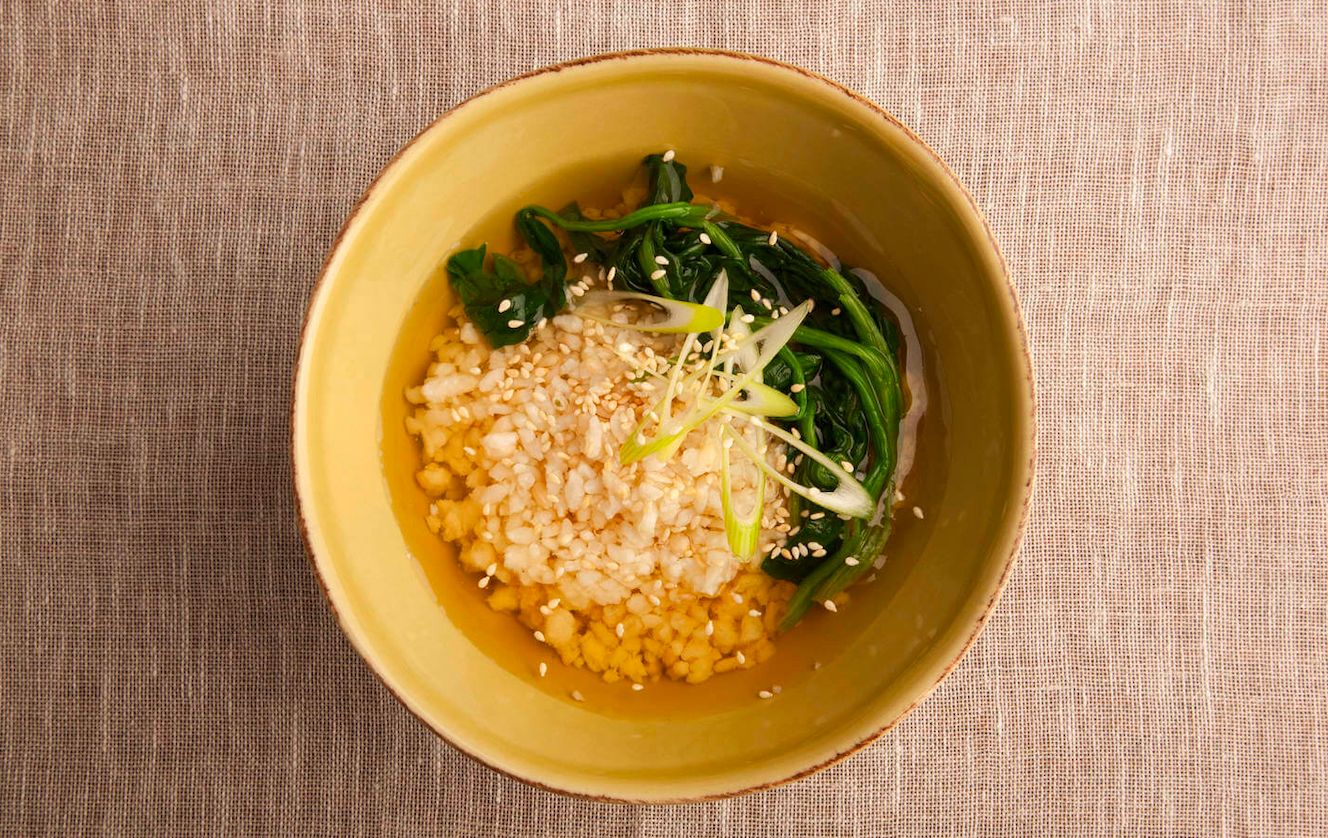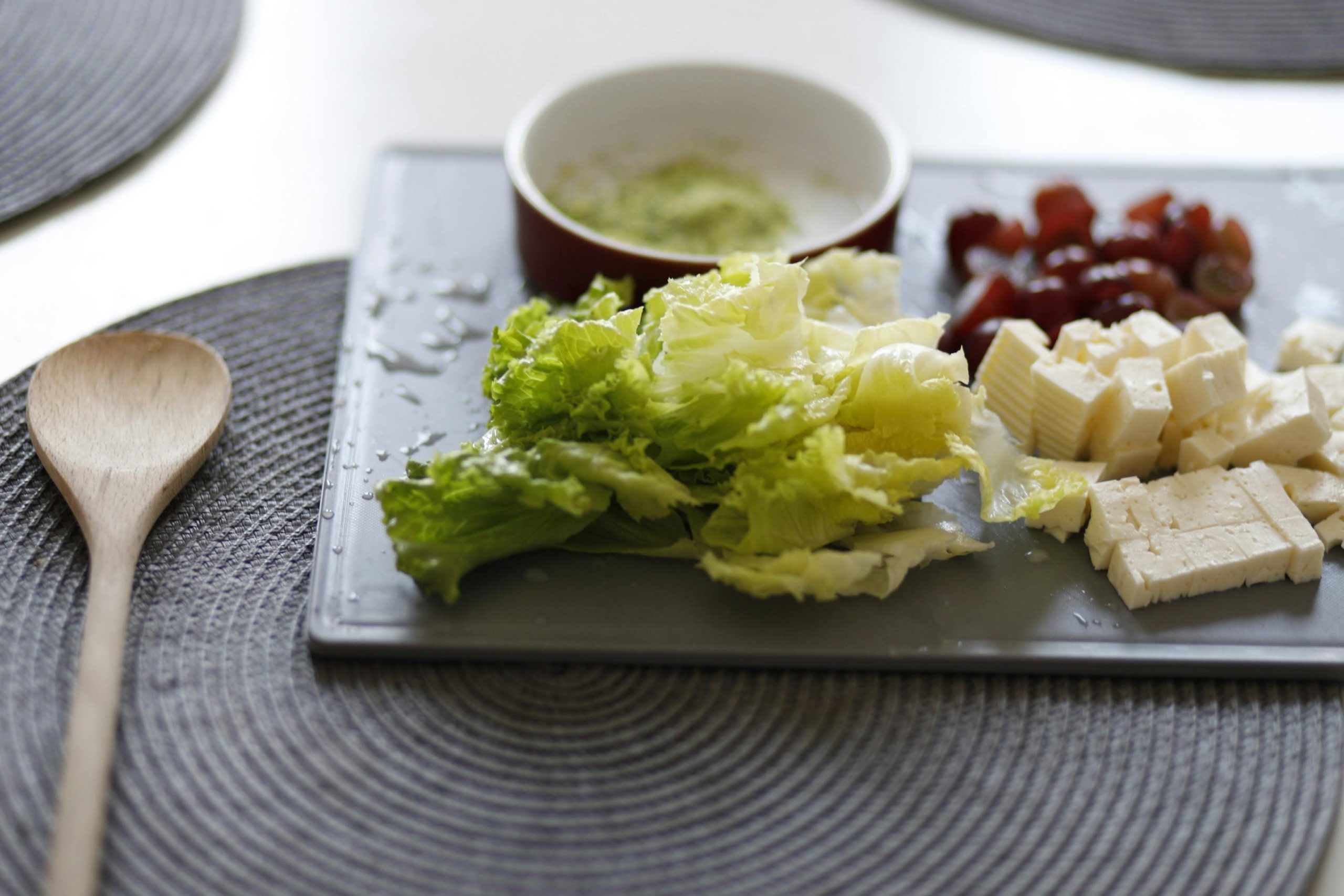Ever wondered what makes ochazuke such a beloved dish in Japanese cuisine?
Finding a comforting yet simple meal can often be a challenging task, especially when looking for something uniquely flavourful.
Ochazuke, also known as cha-cha gohan or bubuzuke, is a traditional Japanese dish made by pouring green tea, dashi, or hot water over cooked rice, usually accompanied by a variety of savoury toppings.
In this comprehensive guide, we’ll explore the essential ingredients, various ways to customise your ochazuke, and dive into its rich cultural significance, ensuring you can master this delightful dish at home.
Essential Ingredients for Crafting the Perfect Ochazuke

The essence of ochazuke lies in its simplicity, primarily revolving around rice and tea. The perfect ochazuke starts with short-grain Japanese rice, known for its sticky and soft texture that pairs beautifully with the broth. Whether you use leftover rice or cook a fresh batch, the choice of rice sets the foundation for this comforting dish.
Next, the broth, typically made from Japanese green tea, plays a crucial role. This isn’t just any tea; the type of tea can significantly alter the taste and experience of ochazuke. From the nutty notes of genmaicha to the bold flavors of houjicha, each tea brings a unique dimension to the dish. Additionally, dashi broth can be used for a deeper umami flavor, blending seamlessly with various toppings that complete the ochazuke.
Choosing the Right Tea for Your Ochazuke

Choosing the right tea for your ochazuke is pivotal as it forms the broth that infuses the rice with flavor. Traditional Japanese green teas like sencha, genmaicha, and houjicha are popular choices. Sencha offers a balance of sweetness and bitterness, enhancing lighter dishes, while genmaicha, with its roasted rice, adds a comforting toastiness. For a smokier, earthier taste, houjicha is perfect, especially for evening servings due to its lower caffeine content.
Toppings to Elevate Your Ochazuke Experience

The versatility of ochazuke comes alive with its toppings, which can range from simple to elaborate. Essential toppings include:
- Salmon flakes or salted salmon, adding a rich, savory flavor.
- Nori seaweed and scallions for a fresh, oceanic taste.
- Umeboshi (pickled plum) for a tart contrast.
- Sprinkle sesame seeds or furikake for an extra layer of flavor and texture.
These ingredients not only enhance the taste but also the nutritional value, making ochazuke a wholesome meal.
Creative Variations of Ochazuke to Try at Home

For those looking to experiment, there are numerous creative variations of ochazuke to explore. A popular choice is salmon ochazuke, where grilled or broiled salmon is used as the main topping, accompanied by aromatic herbs and a sprinkle of lemon zest for freshness. This variation is particularly beloved for its rich flavors and satisfying texture.
Another delightful variation is tarako ochazuke, featuring pollock roe as the star ingredient. The saltiness of the roe, combined with a dash of soy sauce and wasabi, creates a piquant and invigorating version that’s perfect for those who enjoy a bit of spice in their meals. These variations not only offer a delightful culinary experience but also showcase the adaptability of ochazuke to different tastes and preferences.
How to Make Ochazuke: A Step-by-Step Guide
Preparing ochazuke is an enjoyable and straightforward process, perfect for beginners. Start by cooking or reheating your short-grain rice; remember, the rice should be slightly warm, not hot, to avoid becoming mushy when the tea is added. Next, select your tea—sencha for a balanced flavour or genmaicha for a nutty undertone. Brew the tea as you normally would, ensuring it’s strong enough to infuse the rice with its distinct flavour but not so hot that it overcooks the rice.
Once your tea is ready, place the warm rice in a bowl. Now, it’s time to layer your chosen toppings. Essential toppings include salmon flakes or umeboshi for a touch of savouriness, and nori or finely chopped scallions for freshness. Pour the hot green tea over the rice and toppings, allowing the tea to seep through and blend the flavours beautifully. Stir gently to combine everything into a comforting rice bowl, and your ochazuke is ready to enjoy!
The Convenience of Instant Ochazuke Explained
Instant ochazuke packets have revolutionised the way this traditional dish can be enjoyed, especially when time is of the essence. These packets typically contain a blend of dried ingredients such as seaweed, rice crackers, and seasonings that only need the addition of hot water to create a flavourful meal. The convenience factor is significant, making it a popular choice for busy individuals or those seeking a quick, comforting meal without the hassle of extensive preparation. You can find these instant packets in most grocery stores, making it easy to keep a stash at home or even at the office for a quick lunch or a soothing snack. This straightforward approach ensures that anyone can enjoy ochazuke, regardless of their cooking skills.
Nutritional Benefits of Ochazuke
Ochazuke isn’t just a delight for the taste buds; it’s also packed with nutritional benefits that make it a healthy choice. The base of the dish, short-grain Japanese rice, provides a good source of energy-boosting carbohydrates. When paired with green tea, the dish becomes rich in antioxidants, which are great for your overall health. The typical toppings like salmon or umeboshi (pickled plum) add essential proteins and vitamins. Salmon is particularly beneficial as it is high in omega-3 fatty acids, which are crucial for heart health and cognitive functions.
The beauty of ochazuke lies in its simplicity and the ability to be highly nutritious without being calorie-dense. Here are some key health aspects:
- Low in calories: Depending on the toppings used, ochazuke can be a light meal that doesn’t overload on calories.
- Rich in micronutrients: Ingredients like nori seaweed and sesame seeds add iron, calcium, and magnesium to the dish.
- Digestive health benefits: The warm broth and green tea help in digestion, making ochazuke a comforting option for those with a sensitive stomach. Overall, ochazuke offers a balanced meal that supports a healthy diet while satisfying your cravings for something warm and comforting.
Regional Variations of Ochazuke Across Japan
Ochazuke, a humble yet versatile Japanese dish, exhibits distinct regional variations that reflect the local flavours and culinary practices across Japan. In Shizuoka, a coastal region, ochazuke is commonly topped with succulent grilled eel, known locally as Unacha. This variant leverages the area’s rich eel fishing heritage, offering a unique taste experience that differs significantly from the standard recipe. Conversely, in the ancient city of Kyoto, ochazuke takes a slightly different form known as bubuzuke. Here, it is traditionally served with a variety of Kyoto’s renowned homemade pickles, infusing the dish with a rich, tangy flavour that complements the tea-infused rice beautifully.
Each regional variation of ochazuke not only highlights local ingredients but also tells a story of the area’s culture and traditions. For instance:
- Kyoto’s bubuzuke is often linked to an old saying that suggests serving bubuzuke is a polite way to signal to guests that it is time to leave, reflecting the city’s subtle etiquettes.
- In contrast, the cold ochazuke popular during the summer months in various regions uses lukewarm or chilled tea, making it a refreshing option during Japan’s humid season. This adaptation showcases ochazuke’s versatility and its ability to cater to different seasonal needs, making it a beloved dish year-round.
The Rich History of Ochazuke
Ochazuke has a storied past that dates back over a millennium, originating during the Heian period in Japan. Initially, it was a practical dish designed to utilise leftover rice by adding hot water or tea, making it a staple for its simplicity and thriftiness.
As the dish evolved, particularly during the Edo period, tea became the preferred liquid, and the variety of toppings expanded. This transformation marked ochazuke’s transition from a mere convenience meal to a beloved comfort food, embodying a blend of tradition and adaptability in Japanese cuisine.
Discover More with INDULGE‘s Culinary Tours
Exploring new dishes can be a thrilling adventure, and with INDULGE‘s culinary tours, you’re in for a treat. These tours not only introduce you to Zurich’s vibrant food scene but also offer a deep dive into dishes like ochazuke. By joining, you’ll gain firsthand experience from local experts who bring the history and flavours of each dish to life.
INDULGE‘s tours are designed to cater to both the curious tourist and the seasoned foodie. Benefits of these tours include:
- Learning about the local culinary history and its global influences.
- Enjoying a curated experience that goes beyond the typical dining outing.
- Discovering unique dishes and cooking techniques that you can take home.
This makes every tour with INDULGE not just a meal, but a comprehensive culinary education.
Frequently Asked Questions
How does ochazuke taste?
Ochazuke offers a unique blend of flavours depending on the ingredients used. The base of the dish, which includes short-grain Japanese rice and broth made from green tea or dashi, provides a comforting, mild taste. Toppings such as salmon flakes, nori seaweed, umeboshi (pickled plum), and sesame seeds add varying notes of savouriness, freshness, tartness, and texture to the dish. Additionally, the choice of tea—like the nutty genmaicha or the smoky houjicha—can significantly alter and enhance the overall flavour profile of ochazuke.
What does ochazuke mean in Japanese?
Ochazuke, also known as cha-cha gohan or bubuzuke in Japanese, is a traditional dish made by pouring green tea, dashi, or hot water over cooked rice. The name ‘ochazuke’ combines the words for tea (‘cha’) and submerge (‘zuke’), reflecting the method of making the dish by submerging rice in tea or broth.
Is ochazuke good for you?
Ochazuke is packed with nutritional benefits, making it a healthy choice. The base of the dish, short-grain Japanese rice, provides energy-boosting carbohydrates. The green tea used in ochazuke is rich in antioxidants, which are beneficial for overall health. Toppings like salmon offer high-quality proteins and omega-3 fatty acids, crucial for heart health and cognitive functions. Additionally, ochazuke is low in calories and rich in micronutrients such as iron, calcium, and magnesium, and it supports digestive health due to its warm broth and green tea content.
Is it ochazuke or chazuke?
Ochazuke is also commonly referred to as chazuke. Both terms refer to the same traditional Japanese dish involving rice with poured-over tea, dashi, or hot water. The variation in naming can be attributed to regional preferences or personal choice, but both ‘ochazuke’ and ‘chazuke’ correctly describe this beloved Japanese comfort food.








